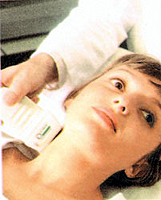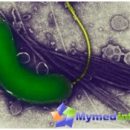How to diagnose hyperprolactinemia? How to treat hyperprolactinemia? Answers to these questions you will find in the article.
Content
diagnosed in 20-25% of patients with infertility and various
disorders of the menstrual cycle, and 40-45% of them are the reason in
The presence of macro and microcholas pituitary.
Definition of the level of prolactin - a mandatory method of study from this contingent of patients.
Blood fence to analyze the prolactin content should
produced from 9 to 12 am on an empty stomach. Woman should be fine
relax on the eve of abstainment from sexual intercourse.
Gynecological examination and inspection of the mammary glands before taking blood.
Diagnosis of hyperprolactiakiyia
The diagnosis of hyperprolactinemia can be delivered at twofold
Definition of increased level prolactin. For most laboratories
Upper border of the rate of hormone - 500 mm / l or 25 ng / ml.
 There are two types of hyperprolactinemia: physiological and
There are two types of hyperprolactinemia: physiological and
Pathological. Physiological hyperprolactinemics manifests itself during
pregnancy, in the process of breastfeeding, during deep sleep, and
Also after physical stress load and in the stressful situation.
Hyperprolactiania also cause sexual contact and reception
Protein food. Pathological increase in the level of prolactin arises when
Tumors of the hypothalamic-pituitary area, after radioactive
irradiation or surgical damage to the pituitary legs, during syndrome «empty» Turkish saddle, craniophangioma. In addition, it is possible
The emergence of pathologies under a number of endocrine diseases (hypothyroidism,
Incenko-Cushing disease, polycystic ovarian syndrome), chronic
deficiency of the kidneys and liver, as well as after operations on dairy
glands and chest organs.
Section of prolactin is disturbed when taking drugs, such as neuroleptics, reserpine, opiates, estrogens.
The clinical picture of the disease is manifested in violation
menstrual cycle (rare menstruation or their complete absence),
infertility, decline in sexual entry (libido).
Galactere (release from the mammary glands) was revealed in 30-70%
Patients with elevated prolactin content. The frequency of its occurrence
depends on the level of hormone content and severity of the menstrual disorders
cycle.
Violations such as Girsutism (Men's Summary) and
Hyperandrogenation (raising the level of men's genital hormones) and acne
(acne, if in a simple) can occur in 20-25% of patients with
Hyperprolaktemia.
Diagnosis of hyperprolactinemia includes:
- determining the level of the blood plasma;
- craniogram;
- Computer tomography (CT) or nuclear magnetic resonance (NMR);
- Inspection of the eyeboard and fields of view;
- Functional tests.
Raising the level of prolactin in the blood plasma - a sign of the disease
and indication of the X-ray Survey of the pituitary.
In 20% of patients on the craniogram, an enlarged saddle is determined, «Double» bottom, expanding the entrance to the Turkish saddle, which is
Signs of presence of prolactinoma (macroenomes) pituitary. In those cases,
When there are no changes on the craniogram, it is shown by CT (computed tomography) or NMR (nuclear magnetic resonance) for
Detecting the microprolactin of the pituitary size of less than 10 mm.
Survey of the eye doves and fields of view on white and colored
Tags shown in patients with macroenomes to detect distribution
Tumors beyond the Turkish saddle - on the crossroads of optic nerves.
Functional samples with TRG (thyrotropic release-hormone) or
Metoklopramide allow the differential diagnosis between
organic hyperprolactineia due to micropoffy microense,
and functional not related to the tumor process.
Hyperprolactinemia can be combined with diseases such as
Polycystic ovarian syndrome (SPKI). One of the hormonal parameters
SPKA is to increase the ratio of Hormones LH / FSH, in combination with
Violations of the menstrual cycle by type of oligo-amenoria with
hyperagratenia or without the last. Final diagnosis
confirmed ultrasound, laparoscopy with ovarian biopsy and subsequent
Patomorphological research.
Treatment of hyperprolactiakiyia
The treatment of hyperprolactinemia is carried out with the help of medicines, radiation therapy and surgical intervention.
In the macroenoma of the pituitary, the question of the treatment method is solved
jointly with a gynecologist and neurosurgeon. With hyperprolactinov
states caused by microenomes of pituitary or functional
Increased hormone, leading is the use of dopamine agonists
(Yes): Parlodela, Bromocriptic, Seroktyptin.
In recent years, dosage forms have been actively used
prolonged action: norprolac and reaches. Domestic
Preparation - serbergin - successfully tested in clinics and can be
Recommended for the treatment of all types of hyperprolactinemia.
Prescribed drugs with cycles for 6-12-24 months. During them
Reception by experts are controlled by the level of prolactin and measurement
rectal temperature. The establishment of ovulation and menstruation is planned
In 80% of cases, pregnancy occurs in 65-72% of cases.
Patients with hyperprolactinemia should know that they
represent a group «Risk» for the possible development of tumors
pituitary or their recurrence after treatment, pregnancy and childbirth. Them
should be observed with specialists all life.









